Are snow tires enough to handle winter conditions, or do you need to add chains for extra traction? Discover the facts about using chains on snow tires and safeguarding your winter drives with expert insights.
Can You Put Chains On Snow Tires?
Yes, you can put chains on snow tires. Snow chains offer added traction on icy or snowy roads, improving your vehicle’s grip and safety in challenging winter conditions.
In this article, we’ll explore the compatibility of snow chains with snow tires, potential tire damage from chains, guidelines for proper installation, legal regulations regarding chain usage in different states, the ideal timing for using chains, considerations for different vehicles, maintenance tips, and whether chains should be on all four tires or just two.
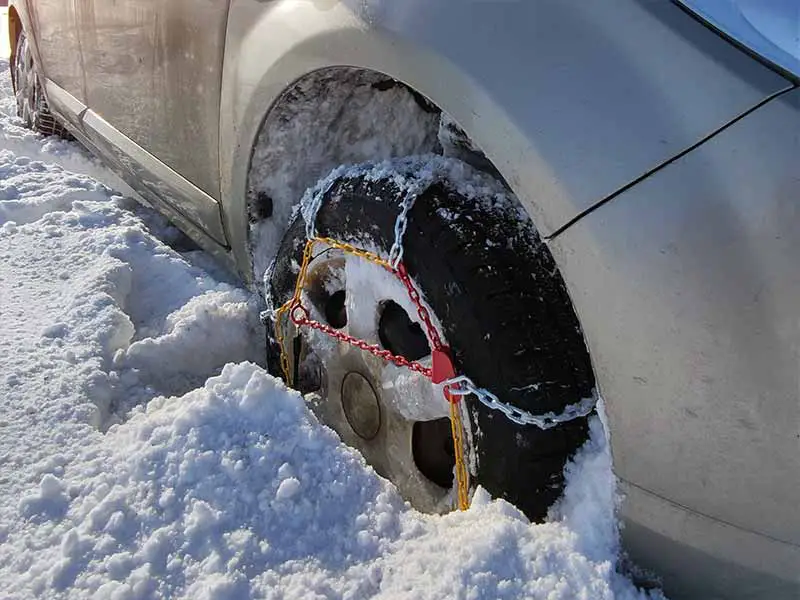
Understanding Snow Chains and Tires
Understanding the differences between snow chains and snow tires is crucial for safe and effective winter driving. While snow tires are designed to handle wintry conditions with their specialized rubber compound and tread patterns, snow chains serve as an additional layer of traction enhancement, especially in more extreme conditions.
Snow Tires: Purpose and Functionality
Snow tires, also known as winter tires, are specifically designed to excel in cold weather conditions, offering enhanced grip and control on snow-covered or icy roads. Here are key points to grasp about snow tires:
- Tread Pattern: Snow tires boast specialized tread patterns with deeper grooves and unique siping (tiny slits) to increase traction on slippery surfaces.
- Rubber Compound: They are crafted from a softer rubber compound that remains pliable even in cold temperatures, ensuring a better grip on wintry roads.
- Enhanced Performance: These tires significantly improve braking and handling on snow and ice, providing greater safety during winter driving.
Snow Chains: Enhancing Traction
Snow chains, on the other hand, are supplemental traction devices that you attach to your tires for added grip on snow or ice. Here are essential insights regarding snow chains:
- Increased Traction: Chains consist of interlinking metal segments that wrap around tire treads, increasing traction and preventing slippage on slippery surfaces.
- Compatibility: They are generally used on top of regular tires and are particularly beneficial in extreme weather conditions where snow tires alone might not suffice.
- Installation: Proper installation is crucial for effective performance. When used correctly, they enhance traction and improve the vehicle’s ability to maneuver through snow and ice.
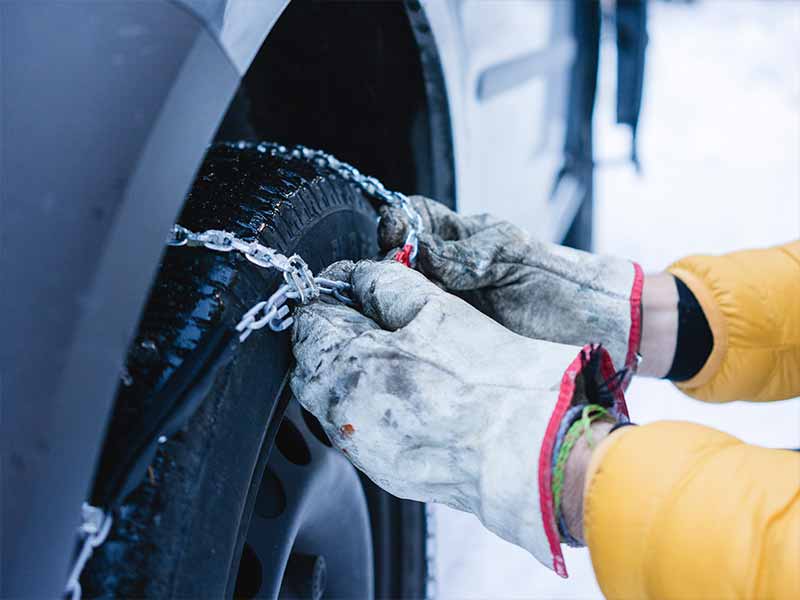
Do Chains Damage Tires?
While the primary purpose of snow chains is to enhance traction on snow-covered roads, there might be apprehensions about their impact on tire longevity.
Assessing Potential Tire Damage
It’s a common concern whether the installation and use of snow chains could lead to adverse effects on tires. Here are some crucial points to consider regarding potential tire damage:
- Tire Tread Wear: Continuous use of chains can accelerate tire tread wear, especially on dry pavement. The metal links of the chains rub against the tire surface, causing friction that can wear down the tire treads faster than usual.
- Chain Compatibility: Utilizing proper-fitting chains designed for your tire size reduces the likelihood of damage. Improperly sized chains may lead to rubbing against the wheel well or vehicle components, potentially causing damage.
- Driving Conditions: The severity of potential damage depends on various factors, including road conditions, driving speed, and the duration of chain usage. Prolonged use on dry roads can significantly impact tire treads.
Minimizing Tire Damage
To mitigate potential tire damage while using snow chains, here are some essential tips:
- Proper Installation: Ensure correct installation following the manufacturer’s guidelines. This includes selecting the right-sized chains and securing them tightly to prevent unnecessary movement.
- Limited Use on Dry Pavement: Avoid extended use on dry roads whenever possible. Remove the chains when they’re no longer needed to prevent excessive wear on tires.
- Regular Inspections: Periodically check both the chains and tires for any signs of wear or damage. Replace worn-out or damaged chains promptly to prevent harm to your tires.

Guidelines for Using Snow Chains
Knowing how and when to install snow chains can significantly impact your safety and the longevity of your tires during wintry conditions.
Correct Placement of Snow Chains
Installing snow chains correctly is paramount to ensure optimal traction and avoid unnecessary strain on tires. Here are essential guidelines for the proper placement of snow chains, especially on 2WD vehicles:
- Rear Wheel Installation: For 2WD vehicles, it’s recommended to place the chains on the rear wheels. This provides better traction during acceleration and helps maintain vehicle stability when turning on snow-covered roads.
- Follow Manufacturer Instructions: Always adhere to the specific instructions provided by the chain manufacturer for correct installation. This includes securely fastening the chains and adjusting tension as required.
Important Tips
Understanding concerns related to tire damage and chain usage is crucial for safe and effective winter driving. Here are some additional insights to consider:
- Avoiding Excessive Speed: While driving with chains, it’s advisable to maintain moderate speeds to prevent unnecessary stress on tires and chains. Excessive speed can increase friction and wear.
- Removing Chains When Not Needed: Remove snow chains when driving on cleared or dry roads to prevent unnecessary wear on tires. Extended use on pavement can cause accelerated tire tread wear.
Ensuring Safe Winter Driving
For a deeper understanding of the necessity of chains in varying weather and road conditions, especially in relation to different types of vehicles, you might find our article on snow tires vs. chains informative.

Snow Chains and Legal Regulations
Comprehending the laws and requirements surrounding snow chain usage is crucial to ensure compliance and safe driving during wintry conditions.
State Regulations on Tire Chains
Different states have varying regulations regarding the use of tire chains. Here’s what you need to know:
- State-Specific Laws: Some states have specific laws regarding when and where tire chains are mandatory. It’s essential to familiarize yourself with these regulations before traveling in wintry conditions.
- Chain Requirements: Certain states may require vehicles to carry chains during specific times of the year or in designated areas, especially in mountainous regions or areas prone to heavy snowfall.
Compliance and Safety Considerations
Understanding when chains are legally required by law can prevent potential fines and ensure your safety during winter travels. Here are additional considerations:
- Monitoring Weather Advisories: Keep an eye on weather forecasts and advisories, especially if you’re planning to travel through areas where chain usage might be mandatory during certain weather conditions.
- Being Prepared: Even if chains aren’t immediately required, having them readily available in your vehicle during winter months is a proactive measure for safety and compliance.
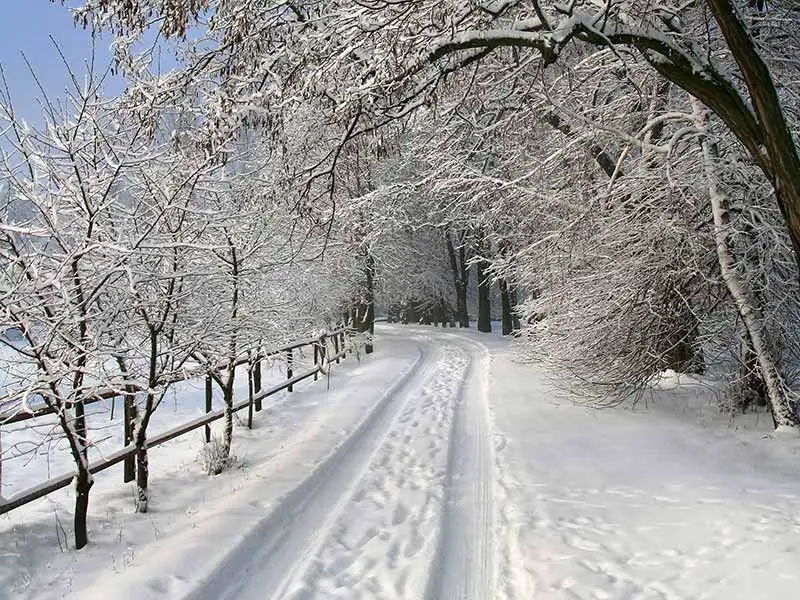
When to Use Snow Chains
Knowing when to use snow chains ensures optimal safety and traction on wintry roads.
Determining the Appropriate Conditions
Determining the appropriate conditions for installing snow chains can significantly impact their effectiveness. Here are key points to consider:
- Road Conditions: Install snow chains when road surfaces are covered with snow or ice, reducing traction. Chains provide additional grip, enhancing vehicle control in such conditions.
- Legal Requirements: Besides road conditions, be aware of legal mandates. Some regions or roadways may require chains during specific weather conditions, regardless of your vehicle’s traction capabilities.
Considerations for Different Vehicles
Understanding the necessity of chains in varying weather and road conditions for different types of vehicles is crucial. Here are some considerations:
- 2WD Vehicles: In 2WD vehicles, especially those without snow tires, installing chains becomes particularly important in heavy snow or icy conditions to ensure adequate traction.
- All-Wheel-Drive (AWD) and Four-Wheel-Drive (4WD) Vehicles: While these vehicles typically offer better traction, in severe winter conditions, especially on steep slopes or icy roads, using chains can still be beneficial for added safety and control.
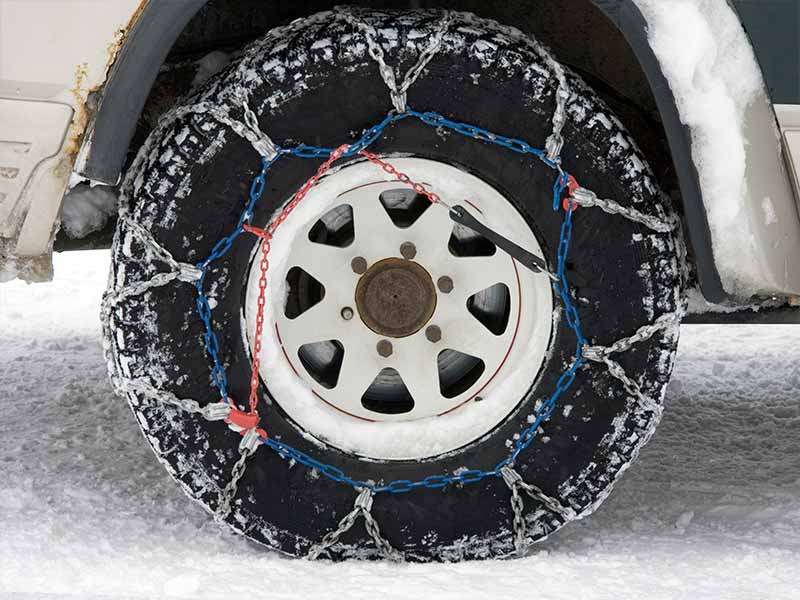
Leaving Chains Overnight and Maintenance
Leaving snow chains on overnight might seem convenient, but it’s essential to consider safety and potential issues:
- Safety Concerns: Overnight conditions, like freezing temperatures or thawing, can affect chain integrity. Chains might loosen or cause damage if not readjusted properly.
- Potential Damage: Extended use can accelerate tire tread wear, especially when driving on cleared roads. This can reduce tire longevity and affect vehicle performance.
Maintenance Tips for Snow Chains
Proper maintenance ensures optimal performance and longevity of both the chains and tires. Here’s what you need to know:
- Regular Inspection: Before and after use, inspect chains for signs of wear, damage, or rust. Replace worn-out or damaged parts promptly to prevent further issues.
- Cleaning and Storage: After use, clean chains thoroughly to remove salt, snow, and debris. Store them in a dry place to prevent rust and ensure they remain in good condition for future use.
Ensuring Longevity and Performance
For a deeper understanding of the practicality of leaving chains on overnight or for comprehensive maintenance tips, our detailed articles on studded tires vs. chains and snow tires vs. chains offer valuable insights into optimizing tire and chain longevity during winter travels.
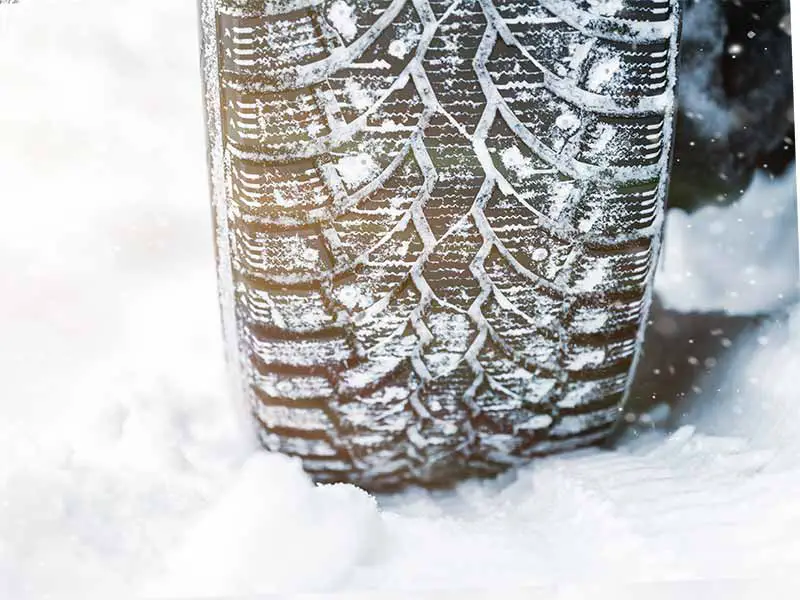
Do You Need Chains on All 4 Tires?
Understanding whether snow chains should be installed on all four tires or just two is crucial for optimal traction and tire maintenance in wintry conditions. Let’s delve into this topic to clarify the best approach for different vehicles.
Necessity of Chains on All 4 Tires
Determining whether chains are required on all four tires depends on several factors:
- Two-Wheel-Drive (2WD) Vehicles: Typically, installing chains on the drive wheels (rear wheels for rear-wheel-drive vehicles and front wheels for front-wheel-drive vehicles) is sufficient to enhance traction.
- All-Wheel-Drive (AWD) and Four-Wheel-Drive (4WD) Vehicles: These vehicles often distribute power to all wheels, offering better traction. However, in severe wintry conditions, using chains on all four tires can provide an extra layer of security and control.
Considerations for Different Vehicles
Understanding the implications of installing chains on all four tires versus just two is essential for safe driving:
- Traction and Control: Installing chains on all four tires ensures more uniform traction and control, especially in extreme weather conditions.
- Tire Longevity: However, prolonged use of chains on all tires can accelerate tire tread wear, particularly on cleared roads.
Resources
Below are some links you may find helpful when learning about tires:
- How do I use tire chains in the winter – TireRack
- How to install and drive with snow chains and cables – AAA
Final Thoughts
While chains enhance traction, improper use or extended installation might damage tires. Always prioritize correct installation, adhere to legal regulations, and consider the specific needs of your vehicle for a secure and enjoyable winter driving experience.
Remember, proper maintenance and informed decision-making regarding chain usage can significantly impact tire longevity and ensure safer travels in harsh winter conditions.
Good luck and happy motoring.





